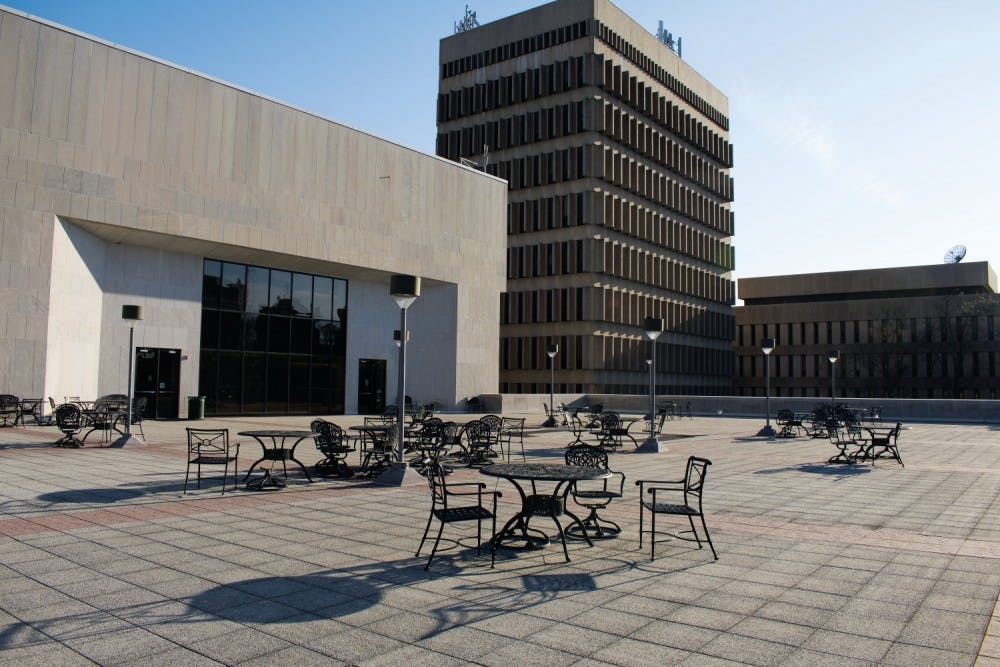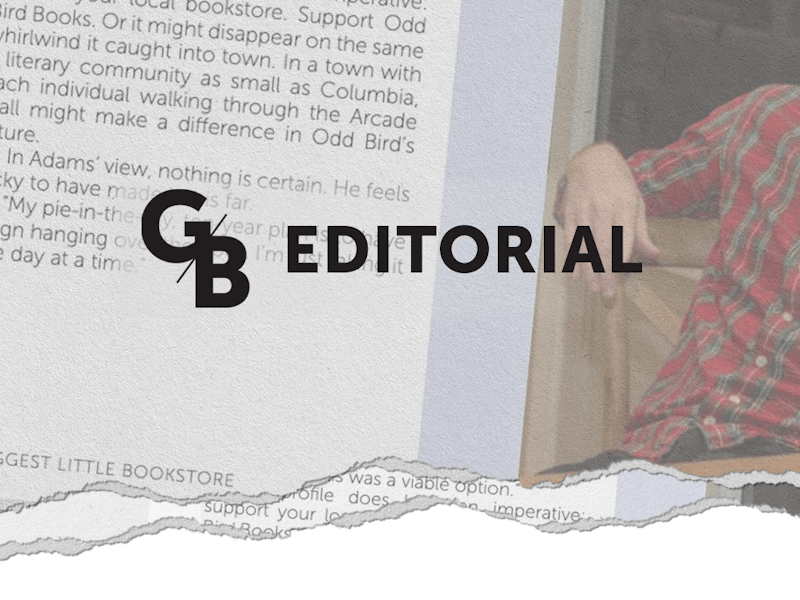Photo by Katie Slack
Visiting the third-floor balcony of Gambrell Hall is a one-time affair. Freshmen step outside thinking, “This is so nice, an outdoor place to study!” but soon realize that the chairs are broken, the surroundings are bleak and the temperature is either sweltering or frigid. At any time of day, during any season, not one chair is occupied. Given that the square footage of the balcony is nearly that of Gambrell Hall itself, it seems like a waste of space.
Enter the ENVR 501 (Special Topics in the Environment, Section 3) class, taught and led by Tom Syfert. As the director of Environmental Health and Safety here at the University of South Carolina, he works every day with the goal of implementing sustainable practices here on campus. After receiving the Magellan Grant, this class decided to take a nearly unusable space and make it a sustainable wonderland.
Creatively titled The Gambrella Project (a combination of Gambrell and the forthcoming umbrellas), the team first created a detailed listing on experiment.com, which both explains their plan and has a platform for donations. The class teamed up with both the Mountaineering and Whitewater Club and the Office of Sustainability to help with funding, but making all ends meet is a constant task. This project, however, has piqued the interest of many donors; Riverbanks Zoo is giving composted materials from their “Compoost” program, and the project has also obtained solar charging stations by Solar Chief, a local company. These stations are vital to the project. “Students want the best of both worlds, being outside and having some form of technology,” says Lougen Ajlani, head of planning and networking for the project.
“If nothing else, we don’t want USC to be represented as dilapidated,” Ajlani says. “There are so many things happening for sustainability here, and we want to reflect that in an otherwise bleak space.” She says that the space is intended to serve many a purpose: studying, recreation, and maybe even an outdoor classroom.
The plan consists of 12 planter boxes with benches, solar charging stations and shade sails on the patio. The planter boxes, in accordance with their theme of locality, will be filled with plants and flowers from local nurseries. On the boxes, there will be labels detailing what each plant is and how it contributes to the environment and sustainability. With the help of campus architecture and landscaping, the project will be not only beautiful, but functional as well. And this is only the first phase. Phase two is about leaving the future of their work to forthcoming students, led by Syfert. Just as this team has developed a flower-filled foundation, future classes are encouraged to pick up where they leave off and keep “greenifying” this space. Versatility is key; since this area is like a blank canvas, embellishments are not just welcome, but hoped for.
This project is not only for landscaping and aesthetics – it will also serve as a subject for experimentation. With the help of students from the biochemistry department, they will test differences in variables. “Each box will be different with the different plants, different compost or fertilizer, different beads inside of it,” Ajlani says. Lenda Thompson will be conducting the surveys of how well the different variables affect the plants in the planter boxes. With a more humanist approach, Thompson will also conduct research on how adding green space to an area affects the mental health of students and faculty by looking at morale, time spent outside and optimism. “The results of what we’re testing will go towards what will best suit other planter boxes in other areas of USC,” says Tyler Drafts, also on the project’s team.
The current deadline to have it all up and running is May 7, and the group will rely on themselves and some volunteers to help transport materials to the patio. Those interested in keeping up with the project can follow @thegambrellaproject on Instagram for updates. Step by step, we as a university are moving forward, to a greener, brighter future.

